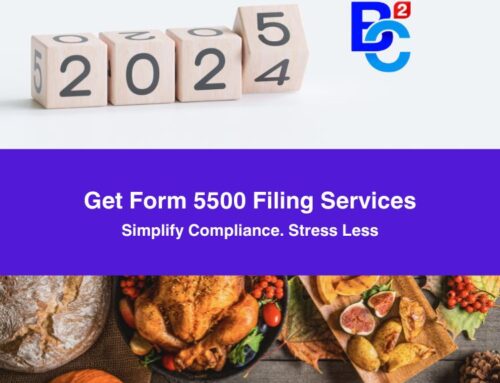Effective for cases filed after April 1, 2018, employee benefit strategies controlled by the Worker Retirement Earnings Safety Act (ERISA) have to follow the US Division of Labor’s brand-new disability insurance claims laws.
What do the new regulations call for?
The purpose of the new guidelines is to guarantee full and also fair insurance claims assess procedures for any type of decision whether a complaintant is “disabled” in regards to an ERISA plan.
 In many aspects, these expanded requirements mirror the protections that were added by the Patient Defense and Affordable Care Act (ACA) for certain group health insurance plan claims, such as requirements to avoid disputes of passion, as well as to make sure that rejection notifications are delivered in a “culturally and also linguistically proper way.” The policies additionally take on the ACA requirement to notify plaintiffs if the strategy is based on a decision on any kind of proof or reasoning taken into consideration, trusted, or created by the claims manager (or at its instructions) during the pendency of the appeal, and to offer the plaintiff with enough time to respond before a damaging benefit resolution is made (although they do not embrace the ACA guideline automatically providing the strategy more time to render a decision in such instances).
In many aspects, these expanded requirements mirror the protections that were added by the Patient Defense and Affordable Care Act (ACA) for certain group health insurance plan claims, such as requirements to avoid disputes of passion, as well as to make sure that rejection notifications are delivered in a “culturally and also linguistically proper way.” The policies additionally take on the ACA requirement to notify plaintiffs if the strategy is based on a decision on any kind of proof or reasoning taken into consideration, trusted, or created by the claims manager (or at its instructions) during the pendency of the appeal, and to offer the plaintiff with enough time to respond before a damaging benefit resolution is made (although they do not embrace the ACA guideline automatically providing the strategy more time to render a decision in such instances).
In many areas, the demands for special needs insurance claims are much more onerous compared to the ACA group health plan demands. Rejection letters for disability claims need to consist of the following aspects that are not required for other ERISA plans:
- a conversation of the decision, including a description of the basis for disagreeing with or not following: (1) the views provided by the complaintant of health care as well as vocational professionals that treated or assessed the claimant; (2) the views of medical or vocational experts whose guidance was aquired in support of the strategy in connection with a claimant’s adverse advantage determination; and (3) a special needs determination concerning the plaintiff made by the Social Safety And Security Management; as well as
- either: (1) the certain internal policies, standards, procedures, requirements or other comparable standards of the strategy trusted in making the adverse advantage determination; or (2) a statement that such policies, standards, etc. do not exist. (Team health plans, in contrast, might instead specify that a rule, guideline, method or similar standard was trusted without defining its identification, and also supply a copy at no cost upon demand).
With respect to initial insurance claim denials, the notice should also consist of a declaration that the claimant is entitled to obtain, upon request and at no cost, reasonable access to and also copies of all papers, documents and also various other information appropriate to the claim.
Relative to appeal denials, the notice should include a description of any kind of plan-specific restrictions duration that relates to the plaintiff’s right to bring a civil action, consisting of the schedule date on which the legal constraints duration runs out for the claim.
Which fringe benefit strategies need to be updated for the brand-new disability cases policies?
All ERISA employee benefit plans that have issue upon a determination that a claimant is handicapped go through the brand-new regulations. Plan enrollers ought to be conscious that special needs resolutions may be part of any kind of type of ERISA fringe benefit plan, not just those giving long-term or short-term special needs benefits. Group health and wellness strategies often prolong insurance coverage beyond age 26 for grown-up kids that are handicapped, as well as life insurance policy plans that frequently offer a costs waiver for participants who are entirely disabled. Some certified as well as non-qualified retirement or delayed compensation strategies include special provisions for handicapped participants, such as accelerated vesting or early retirement choices.
 Not all plans have an advantage on a complaintant’s disability, nonetheless, have to be changed in order to conform. For instance, where a plan does not provide for its own fiduciaries to make a resolution of handicap, however rather accepts the determination made by the manager of one more plan (like the company’s long-standing handicap plan) then only the terms of the various other plan should be changed. Examples include health insurance that expand eligibility, or postponed settlement strategies that give increased vesting, to claimants that are receiving benefits under the company’s long-term impairment plan or Social Security Impairment Insurance (SSDI).
Not all plans have an advantage on a complaintant’s disability, nonetheless, have to be changed in order to conform. For instance, where a plan does not provide for its own fiduciaries to make a resolution of handicap, however rather accepts the determination made by the manager of one more plan (like the company’s long-standing handicap plan) then only the terms of the various other plan should be changed. Examples include health insurance that expand eligibility, or postponed settlement strategies that give increased vesting, to claimants that are receiving benefits under the company’s long-term impairment plan or Social Security Impairment Insurance (SSDI).
Also if a strategy gives for its very own fiduciaries to make a resolution of disability, it may not need to be separately modified if the plan’s terms incorporate by referral the handicap insurance claims and also allures procedures of an additional plan that has been amended. In such situation, the strategy’s fiduciaries should adhere to the brand-new procedures, and to update the cases and appeals rejection notices to adhere to the brand-new guidelines.
In short, it is only those ERISA pre-preparations that condition an advantage upon a resolution that a complaintant is handicapped, where the strategy fiduciaries themselves have the discretionary authority to identify if an individual is impaired, and where the strategy includes its very own procedures for making such determinations, that need to be modified. Plans with this layout attribute and will likewise need to issue a Summary of Product Modifications (SMM) to inform participants of the changes, as well as modify their claims as well as allures notifications.
ERISA strategies that are not likely needed to earn modifications to comply with the brand-new regulations consist of:
- those that do not condition any benefit upon a determination that a claimant is disabled
- those that accept an impairment decision from an additional strategy or celebration, such as the employer’s long-term handicap strategy or the Social Safety And Security Management
- those that incorporate by referral the cases as well as appeals procedures of an additional plan that has been updated
If a plan is affected by the new case regulations, what actions should intend enrollers take and by when?
- Identify which strategies are affected. The very first step is to take an inventory of your ERISA benefit strategies and also figure out whether the strategy: (1) conditions an advantage upon a resolution that a plaintiff is impaired; (2) provides that the plan fiduciaries themselves have discretionary authority to identify if a participant is disabled, or accepts the decision made by one more plan; (3) has its own procedures for making such decisions.
- Changes should be executed by the end of the strategy year, as well as SMMs describing the changes must to be distributed to individuals no later than 210 days after the end of the plan year. Strategies where the fiduciaries themselves make a decision of special needs could want to consider amending the strategy to approve the resolution of handicap by another plan (such as a long-term impairment plan) or the Social Safety Administration.
- Where the strategy fiduciaries themselves have discretionary authority to figure out if an individual is handicapped, they will require to make such resolutions in conformity with the brand-new treatments for all types of cases filed after April 1, and also need to guarantee that insurance claims allures denial notifications that have been updated to comply. Also where the strategy has actually passed on optional authority to an insurer or Third-Party Administrator (TPA) to make such resolutions and also problem denial letters, the insurance company or TPA could need to personalize their conventional notification templates to accommodate distinct stipulations of the company’s strategy.





